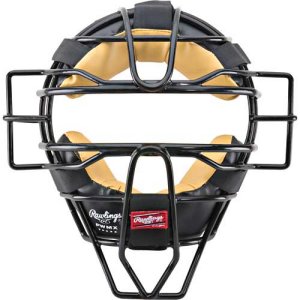My son is 14yo and has been using a hockey style mask since he starting catching. This fall he caught a couple of foul tips off his mask that left him ringing. We had him checked for concussions and fortunately he did not receive one.
However, since this happened I've been doing a lot of research on the internet and it appears there are two strong opinions on the subject. One strongly in favor of hockey style for ear protection and one strongly in favor of traditional mask/skull cap for concussion protection.
With this being said, I am interested in getting a traditional mask for my son to try out. My thoughts are that he uses it catching bullpens, practice, etc... until he gets adjusted to it or makes a firm decision as to which one he likes the best.
I know nothing about traditional masks so does anyone have an opinion as to brands, features, and the like so I can make an informed decision?
Thanks and I've checked with our governing high school body regarding whether or not it is mandatory to wear a hockey style helmet. Their response to me was that it is the umpire's decision. I realize there is some question as to whether or not they are legal to wear but my primary concern is him remembering to do his homework!
Thanks again.
Original Post





